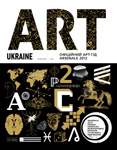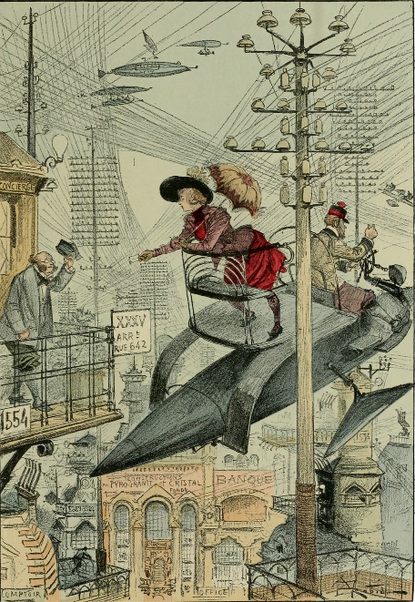ARSENALE’S DIARY: The special Project ‘Double game’
‘A lack of understanding is not frightening. Obviously, two nations with two languages will never be as understandable and clear to each other as two people of the same nation and language will be. But, that is not a reason to stop communicating. There are barriers even between the people of the same nation and language, interfering with boundless communication and total mutual understanding. These are the barriers of education, methods of bringing up children, skills, talents and individual traits. We could say that any person is able to get along with any other person, and we could say that no two people are able to communicate easily without some misunderstanding. Both statements are true…’
Hermann Hesse ‘ The Glass Bead Game’

ART UKRAINE № 3(28) May-June 2012. Heading FOREGROUND
The ‘Double Game’ project, developed by Ukrainian and Polish artists, has an interdisciplinary and exciting character. Visual art is implemented interacting with architectural and space installations, performances, interacting with music and videos. Most of the works are created especially for ARSENALE 2012, being made under a ‘work in progress’ mode.

Aleksander Solovyov
Ukrainian and Polish teams agreed to arrange the whole of the first floor of the Mystetskiy Arsenal using both a cross mix, an action format and case artistic games with twice the ground area.
The exposition installation proposed by Ukrainian architectures from ‘Gruppa Predmetov’ and the Polish architects team Centrala Designers Task Force will be applied as a space system not only ‘constructed’, but marking the space as soon as it is sourced from the very nature of Arsenal and reviewing the space in accordance with connection, interaction and collaboration issues.
The main idea is to use the ‘game’ issue as a starting point connected with the name of the project. Game is a certain kind of artistic expression genre and context construction. In our case, it fits perfectly as a look of contraries. As it is in Hesse’s philosophical parable it is met text weaving, abstract synthesis of social, intellectual, cultural and national flats. Its aim is to find deep connections between the phenomena which are, at first glance, from different fields. ‘What looks like something’…and certainty, we are much more alike than it would seem, in spite of the external mental barriers such as deep layers of the thought structures…
Looking at the Ukrainian and Polish special project, it is possibile to find something in common with the outline fields of identity, differences and affinity. Both countries share a part of common history from the recent past. We have got many ‘ideological’ common features closer to each other, but now we are neighbors with the opposite cultural background. The dialogue game of two cultural identities cannot continue without controversies. These are different political development vectors, different kinds of neoliberalism, different cultural, spiritual and religious values… To join and unite these opposite, artificially provoked situations there should be created an ‘X-ray’ to unveil deep senses, something which is not easily seen. While playing, it is easier to break the borders. According to Heidegger game is viewed as a ‘transcendental language’. It is not only the move from transcendental experience to inherent being. This rule works with every day, routine matters as well. Our task is to identify inconsistency. At first we need to identify it itself and then as a pole of a certain unity. The exhibition is opened as a binary, double file, file with a double content…
DOUBLE GAME
A special project of the first Kiev International Biennale of Contemporary Art, ARSENALE 2012
Participants:
1. APL 315 (Ukraine)
2. SOSka group (Ukraine)
3. Pawel Althamer (Poland)
4. Anatoly Belov (Ukraine)
5. Bogna Burska (Poland)
6. Myroslav Vaida (Poland)
7. Artem Volokitin (Ukraine)
8. Hamlet Zinkovskiy (Ukraine)
9. Daniel Halkin (Ukraine)
10. Kseniya Gnilitska (Ukraine)
11. ‘Gruppa Predmetiv’ (Ukraine)
12. Ihor Husev (Ukraine)
13. Oscar Davitsky (Poland)
14. Edward Dwurnik (Poland)
15. Dobrynya Ivanov (Ukraine)
16. Zhanna Kadyrova (Ukraine)
17. Taras Kamennoy (Ukraine)
18. Alevtina Kakhidze (Ukraine)
19. Group KNDR (Ukraine)
20. Robert Kushmirovsky (Poland)
21. Zbigniew Libera (Poland)
22. Anna Molska (Poland)
23. Anna Naduda (Ukraine)
24. Lada Nakonechna (Ukraine)
25. Francishek Orlowsky (Poland)
26. Serhii Petlyuk (Ukraine)
27. Alexander Roitburd (Ukraine)
28. Stepan Ryabchenko (Ukraine)
29. Oleksii Sai (Ukraine)
30. Anka and Wilhelm Sasnal (Poland)
31. Ivan Svitlychniy (Ukraine)
33. Monica Sosnovska (Poland)
34. Jacek Stanishevsky (Poland)
35. TanzLaboratorium group (Ukraine)
36. ‘Ubik’ group (Ukraine)
37. ‘Centrala’ group (Poland)
38. Ilya Chichkan (Ukraine)










